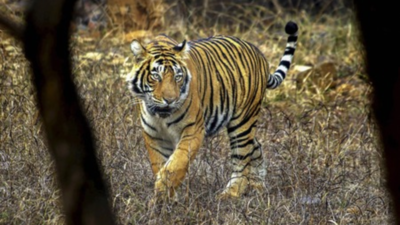NTCA orders probe into 25 missing tigers of Ranthambore | India News – Times of India


JAIPUR: The national tiger conservation authority (NTCA) has asked the wildlife crime control bureau (WCCB) to gather intelligence on the disappearance of 25 tigers from Ranthambore Tiger Reserve (RTR) in Rajasthan.
The move follows an order issued on Nov 4 by chief wildlife warden Pavan Kumar Upadhyay regarding the missing tigers. Upadhyay’s order cited an internal report of Oct 14, which stated that no concrete evidence on the presence of 11 tigers for more than a year and for 14 tigers for less than a year.
NTCA member-secretary Gobind Sagar Bhardwaj said, “I have been closely monitoring the issue. Though the Rajasthan govt has already constituted a committee, NTCA has directed WCCB to look at the possibility of poaching, retaliatory killing or any other cause by gathering and strengthening existing intelligence.”
On the other hand, the state forest department has claimed that they have gathered evidence of presence of at least 10 of the 25 missing tigers in RTR. “Of the 14 tigers that have been missing for over a period of less than a year, evidence of the presence of about 10 has been found. Evidence on four more tigers is expected, as they have been missing for less than six months. The remaining 15 tigers are still unaccounted for and a committee has been constituted to locate them,” Upadhyay said on Thursday.
A retired forest official said, “WCCB can investigate the shortcomings and reasons for the disappearance of tigers in Ranthambore. In 2022, the NTCA formed a committee comprising the DIG of NTCA and the joint director of WCCB to probe the missing tigers. However, the investigation was postponed due to the lockdown. Central agencies investigating the matter is the need of the hour.”
There have been recent cases of poisoning due to overcrowding in Ranthambore as tigers move closer to human habitation.
“Currently, 1,400 sq km of the 1,700 sq km area of RTR is designated as critical tiger habitat, with around 300 sq km as buffer zone. More areas should be developed to accommodate the growing tiger population, as tigers seeking territory move into unsafe zones, where they face threats from villagers,” added an official.







